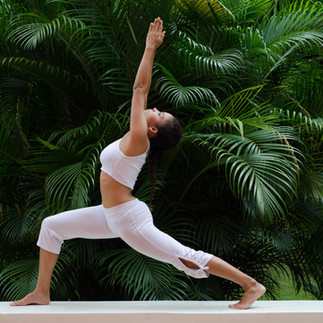Yoga for Hip Health
- Michelle Pearson

- Jul 30, 2023
- 2 min read
Yoga is a low-impact exercise with countless benefits for the whole body and mind, and intensity levels can be adjusted to fit individual needs, so anyone can participate in this activity to help their joints. When you move through and hold the postures and poses in yoga, it strengthens muscles and bones which benefits joint health. Healthy bones and strong muscles support the body and take the stress off of joints.
Participating in yoga and doing certain poses can help relieve pain by taking the strain off of the joints and increasing flexibility, range of motion, and stability. But it’s not just for getting rid of preexisting pain… even if you’re not already experiencing joint pain, these poses and strengthening measures can help prevent developing problems in the future.
It is important to develop the surrounding muscles to relieve hip pain and protect the joints to prevent future problems. Gluteal muscles and the iliopsoas muscle are important muscle groups that help stabilize the hips and enable movement. Hamstrings and muscles of the inner thighs are also important surrounding muscles to develop for hip joint health.
Some poses to help strengthen and relieve hip pain include:
1. Yogi Squat
2. Happy Baby Pose
3. Half Pigeon
4. Low Lunge and High Lunge
Some poses to lengthen and stretch the hip are:
The Side Lunge pose strengthens your glutes, hamstrings, quads, and inner thigh muscles, so it is great for helping most of the major surrounding muscle groups of the hips.
Pyramid Pose creates a deep stretch for the hips and hamstrings, and Butterfly Pose stretches the hips and inner thighs.
The iliopsoas muscle connects the lower back to the upper femur and is the strongest hip flexor, so it’s essential for maintaining strength and support of the hip joint. Supported Bridge Variations with a yoga block are great poses for stretching the iliopsoas.


Consistency is key when taking care of your body and mind. Yoga has many benefits and you WILL feel better the first time you step on your mat, however, maintaining that "feel good" feeling requires a consistent practice. What are you willing to commit to?





















Comments